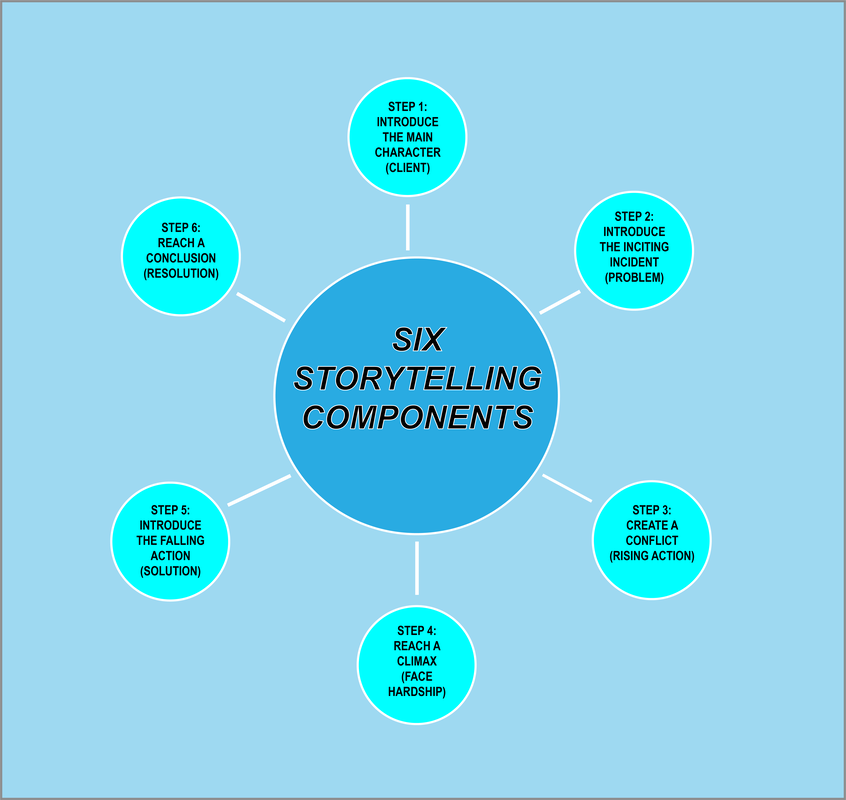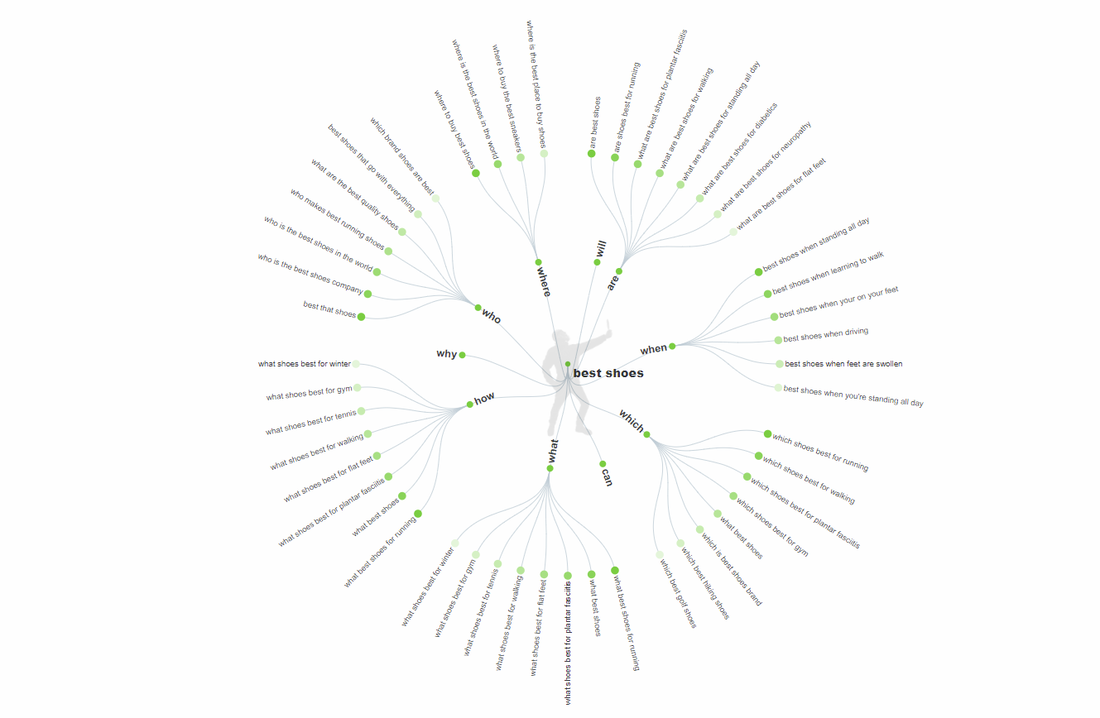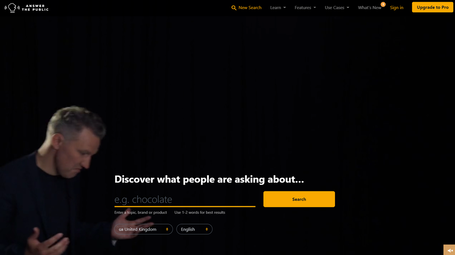|
AI content writing is not a new thing. Up until now, I admit that I have not given it much thought. The AI content marketing tools I had seen before now did not really intrigue – or worry – me. I had zero fears of my livelihood being replaced by a nameless, faceless automaton that cranked out copy at a customer’s behest. Most AI-powered content marketing tools were inferior to the quality copy a human trained in wordsmithing could produce. I would go so far as to say most of it was laughable nonsense. Anyone who would pay for it was wasting their money, in my humble opinion. Flash-forward to now and using AI for content marketing is becoming a hot topic among my fellow copywriting professionals. Some, like me, debate the value of using them. Others fear they are just one AI-generated piece of content away from losing their jobs. I think the truth of AI content marketing tools lies somewhere in between. What is AI-generated content marketing? Since Alan Turing first posed the question, “Can machines think?” in the 1950s, man has been obsessed with artificial intelligence. AI has advanced the medical and industrial fields, to name just two of its profound impacts. Digital marketers started leveraging AI-powered content marketing tools as far back as 2017. According to the 2020 Salesforce State of Marketing Report, 84 percent of marketers admit to using AI. This is a 186 percent increase from the number of marketers using AI in 2018. Most of the AI tools marketers use focus on data collection and analysis. There were no specific data available for the number of copywriters who use AI content marketing tools to assist with their writing tasks. AI tools for content marketing AI copywriting tools use natural language processing (NLP) to spit out copy. If you are wondering what the heck NLP is, no worries. Let me explain. NLP is nothing more than the automatic manipulation of our natural language patterns for both speech and text. When NLP works as intended, it bridges the communications gap between humans and computers. The goal is to help computers understand – mimic, even – the speech and language patterns of humans. Most AI tools for content marketing work like this:
Real copywriters dish on AI content generators What do real copywriters think about AI content generators? Some leverage their power to increase their output and the number of clients they can serve. Others refuse to use them, citing a lack of quality and mediocrity in the content produced. Yker Valerio of Bon Vivant Caffe uses Conversion.ai to improve content quality and boost his writing process. “It’s like having a writing partner. A weird writing partner, but productive nonetheless.” He said he has tried a few other AI content generators but prefers Conversion.ai. Kyle Vine, the marketing director at CKLU Radio in Ontario, Canada, said he had the privilege of meeting the person who runs the IBM Watson program for AI a few years ago at a conference. “I discovered that (AI) can be good for proofreading, but the main way it can be good is with speak.ai or other apps that transcribe speeches to use for SEO applied to your copy. Otherwise, I’ve found there aren’t many options to use AI in copywriting because it’s 75 percent experience and word flowability. AI comes in with the last 25 percent for tiny things just to suggest better SEO/conversion words in my experience.” Archana Karthikeyan from The Marketing Vogue has used AI copywriting tools for about four months. The benefit is that it sometimes helps her with a new direction for her writing if she is experiencing the dreaded writer’s block. Another advantage is it can help save her time during the writing process. The biggest drawback is it is written by AI, not a human. She and her team have discovered facts need to be rechecked any time the AI program she uses creates content to ensure accuracy. My personal experience with AI content marketing tools is mixed. Like Valerio, I have found Conversion.ai to work well for generating titles and content ideas. I am not as impressed with its other content. Depending on the topic, it can be clunky and needing a human touch to make it more readable. I also am beta testing a new AI writing tool now that is not very impressive. In a recent topic I gave the generator for a sales description I was writing about stand mixers, it generated this gem: “The item is circular, about six inches across. It has a lid.” Factually, the tool is correct. Stand mixers are circular and have lids. Does knowing that make me want to buy one? Nope. This was an epic failure. Another time, I asked the tool to generate a direct and adventurous headline for an article about first-time surfers in Australia. Here is what it gave me: “Surfing is a fun and easy sport to learn.” Once again, I do not consider this a success. While the statement is true, there is nothing adventurous about it. The tool still is in the early stages of development, so these results are expected. I will not mention it by name in this blog, but I will provide a more detailed review of it once the beta testing phase is over. How copywriters can leverage AI tools While I respect their opinion, I do not understand copywriters who fear AI-powered content marketing tools. I personally do not think AI will ever get to the point that it will totally replace humans for writing. Humans must teach AI software how to be more, well, human. Computers only know what we teach them. The success or failure of AI content generators rests on the capable shoulders of copywriters like myself willing to serve as teachers to AI. Computers do not understand – nor can they convincingly mimic – brand voice or persona. Humans are very much still needed to finesse any copy an AI produces to improve engagement and tone. My fellow copywriters can breathe a sigh of relief and embrace AI as a teammate rather than fearing it as a competitor. Need help humanizing your content? Reach out to The Write Reflection today to schedule your hassle-free consultation to discuss your needs. AuthorShari Berg has known she wanted to be a writer since she was old enough to hold a pencil in her hand. She believes everyone has a story to tell, and it’s her job to discover it. Shari owns The Write Reflection, a Pittsburgh-based copywriting and content writing company that empowers small business owners to wield the power of words.
0 Comments
Graphic designed by The Write Reflection Case studies are an effective way to add value to your brand. You can “toot your own horn” by doing what any product or service should do best: solve a problem. If you have a website, consider adding a section dedicated to case studies. Then, populate it with the best examples of why your brand is the best at what it does. The U.S. is the largest advertising market in the world. Businesses spend an average of $253.6 billion each year on advertising and marketing. Case studies provide one of the best returns on investment of all content marketing strategies. Not all case studies are created equally. You must know the tricks of the trade to turn a case study into a lead conversion tool. What is a case study? Case studies are an advertising and marketing strategy businesses use as a value-added proposition. Convincing case studies meet the following criteria:
Some companies – and their marketing experts – become preoccupied with “staying on brand.” They focus too much on their brand voice or messaging matrix and forget to leverage the power of storytelling in their case studies. All they accomplish is to bore their target audience and make themselves look self-centered. Case study advantages Building trust in your brand is harder than it looks. Yes, having a great product or service – coupled with amazing customer support – is one of the best ways to keep people coming back for more. How do you convince someone who has never experienced your products, services, or stellar customer service to give you a try? This is where case studies provide an advantage. Consumers have smartened up to fancy sales pitches and flashy graphics on social media. It takes more than these old tricks of the trade to convince them your brand is the solution to their problems. Ratings and reviews from previous customers carry weight, but even those are easily manipulated. Effective case studies provide tangible proof your brand does more than talk the talk. Building brand trust is not the only advantage of an effective case study. Here are a few more worth noting:
Writing an effective case study in 5 easy steps
Now you know what a case study is and why you must include it in your content marketing strategy. Next, I will talk about the five steps involved with writing an effective case study. Step #1: State your case Case studies must leverage the power of storytelling, which means featuring a compelling angle. Not sure how to do that? Take a deep dive and investigate how your customers are using your products or services. Chances are, you will find someone using your brand to solve problems you never knew it could fix. Step #2: Get relatable Make sure whatever angle you choose for your case study is one that is relatable to most of your target audience. Think about what it is that helps you connect with a good story. On some level, you must connect with the story’s protagonist. The client featured in your case study is the protagonist. Find something about the client that makes your core audience root for his or her success with your product. Step #3: Tell the tale Some marketing pros insist they are telling their brand’s story. The problem is, they forget how to tell a story the right way. Think back to your high school English class. (Sorry, this is probably as painful for some of you as doing math is for me. Stick with it. I promise the payout is worth it). If you will recall, you learned that all good stories have certain components:
Step #4: Just the facts Telling a story does not mean you rely on anecdotes to prove your case. Case study best practices encourage using cold, hard facts to back up your claims. Just because you are using storytelling techniques does not mean you should be weaving a tall tale. Make sure any data or statistics you use to support the case relate to the protagonist’s challenges. Step #5: Support the journey Every good story has a hero. I know what you are thinking: this is the part where my business swoops in and saves the day. Well, yes and no. Your brand is not the hero in the story. Think of yourself more along the lines of a supporting character. Your business is there to assist the real hero of the story. Humility is an incredibly effective marketing strategy. It allows for meaningful connections between your brand and its core audience and shows empathy. When you practice humility in case studies, you can increase your credibility without being obnoxious. Case study formats that work The final step in creating an effective case study is in the graphic design. This is where a copywriter designer is a valuable asset to have in your corner. They can craft a compelling story for your case study and design it in an eye-catching manner that gets – and keeps – your core audience’s attention. There are no hard and fast rules for formatting your case study. From infographics and webinars to interview formats and brochure styles, your case study design should fit the content. Ready to get started with your first case study? Contact me today to get a 25 percent discount on your first order that includes content creation and graphic design for the case study of your choice. "I used to be the fist-pounder on the table. I had to learn how to be a real mediator. It gave me a whole new perspective on dealing with my PTSD." Post-Traumatic Stress Disorder affects one in every 11 people in the U.S. That means you likely know someone who is struggling every day with the devastating effects of PTSD. June is National PTSD Awareness Month. Spreading awareness about PTSD is not something I wait for other people to do. For those who do not know, one of my dearest friends is in his 17th year of living with PTSD. Together, we wrote and published Wars End With Me, the story of his ongoing battle. I met Pat Strobel in 2002 when I was working as a reporter at a daily newspaper in his hometown of Butler, Pa. When he deployed to Iraq in February 2003, my editor tasked me with chronicling Pat’s service in the pages of the newspaper. Every few weeks, as Pat had time, he would send me some photos of himself and a quick update on what it was like living – and fighting – in an active warzone. Less than seven months after he was deployed, I received a call to tell me that he was seriously injured when his convoy came under attack in Fallujah. The physical injuries and emotional trauma Pat suffered that day forever changed him. For the last 17 years, Pat has struggled with PTSD. It has complicated his personal and professional life. Three years have passed since we first published his story. What better way to catch up with our readers, who have joined Pat on every step of his journey? I reached out to Pat who, as always, is willing to share the most personal moments of his life in the pursuit of helping others with PTSD. What follows is a progress report and encouragement for others with PTSD to keep fighting the good fight. Going Dutch on PTSD Shortly after our book launched in December 2018, Pat was offered a three-year assignment as a director of maintenance. The catch: he would serve out the stint in the Netherlands, overseeing a Dutch workforce performing maintenance on U.S. Army pre-positioned stock. His new job was part of a partnership between the U.S. and Dutch governments. Pat was tasked with teaching former Dutch military personnel with mechanical backgrounds how to perform maintenance on U.S. Army equipment. “That director of maintenance job was short-lived, because my boss was unexpectedly reassigned, and someone needed to step up,” said Pat. That someone was him. “I assumed that role, and that’s when the job became really challenging.” His new job required a little bit of finesse and a lot of political correctness. “And good communication skills to keep major political incidents from cropping up,” Pat added. The last job Pat had in the U.S. before taking on this new assignment prepared him well. His biggest responsibilities there were contracts and negotiations. Those skills came in handy when he had to mediate between the U.S. Army and the Dutch government over a stalemate on the fine details of the working relationship. Serving as a mediator was a new experience for Pat. He had served with the 3rd Armored Cavalry Regiment out of Fort Carson, Colo. during his active enlistment. He was the guy who fixed all the equipment, to put it simply. Fixing people was never his skill set. Until now. “I used to be the fist-pounder on the table,” he said. “That kind of behavior doesn’t work with the Dutch people. They are very laid back and not easily rattled. I had to learn how to be a real mediator. It gave me a whole new perspective on dealing with my PTSD.” Family ties Leaving his family behind for three years was the most difficult part of taking the new assignment. It was an unfortunate negative that he worked around because, as Pat puts it, he needed a reset. He made it home just twice – with an additional visit in the Netherlands from his wife – before COVID-19 hit and locked everything down. With just two months left on his current assignment, Pat said he is eager to return home for good. One of the good things that happened with his family involves his son, Josh. For those who have read Wars End With Me, you know that Josh enlisted in the military (much to Pat’s dismay). He did not want his son to suffer the same way he had and believed the stress over his son’s decision was a trigger for his PTSD. After a few years as a Corporal in the 101st Airborne and several deployments to Africa, Josh Strobel now has a full-time position with the Iowa National Guard. The new role removed him from active duty in the Army, which has made Pat extremely happy. “It’s one less thing for me to worry about. I don’t have to wonder where he’s at. Once I’m home, I’ll get to see him all the time. If I could have done what he’s doing, I would have. I didn’t even know that active guard existed when I joined the Army.” A different kind of therapy One of the downsides of his three-year stint in the Netherlands was the lack of access to his usual therapy for his PTSD. Working with the Dutch, Pat said, was an alternative form of therapy. Before his new assignment, Pat struggled a lot with angry outbursts because of his PTSD. He has mellowed out and attributes his attitude adjustment to Dutch influence. “The Dutch really have shown me that life shouldn’t be so competitive. Everybody is playing music. Everybody is happy. It’s just a different mentality.” The Dutch do not feel pressured to perform at work the same way Americans do, Pat noted. Screaming and banging his fists on the table when things were not going as planned did not motivate them. It forced him to find a new way to lead. He discovered presenting them with metrics about their job performance compared with others doing similar work (who were more efficient at their tasks) was the best inspiration. “They taught me so much about leadership. I tried to shape my leadership style around their ethics because, at the end of the day, I was trying to extract as much talent from them as I could. Knowing what motivates workers is the key to effective leadership. That, and a lot of patience. I’m definitely learning a lot of patience,” he said, laughing. Lessons learned, anger burned The last three years had their fair of challenges, but Pat is thankful for the experience. “There was nothing but success stories here. That’s what I liked about this place. Getting back around maintenance – grease, oil – it was good for my morale and good for my PTSD. I was starting to doubt myself before I came here. Coming here and separating myself from all those things was almost therapeutic.” Pat said his new attitude will help him better manage his PTSD and his job opportunities once he returns to the U.S. “I don’t know where the perfect job is or if there is such a thing. What I do know is this job I have now has taught me that I just need to shut up and color.” AuthorShari Berg has known she wanted to be a writer since she was old enough to hold a pencil in her hand. She believes everyone has a story to tell, and it’s her job to discover it. Shari owns The Write Reflection, a Pittsburgh-based copywriting and content writing company that empowers small business owners to wield the power of words. Long-tail keywords are a “must-have-it” for boosting your SEO value online. If you are saying to yourself “long tail what nows?” let me explain. Keywords are what Google and other search engines use to help you find what you are looking for online. There are two kinds of keywords: core and long-tail. Core keywords are focused on the topic of a website. If you provide a product or service, your core keywords would describe that product or service. Let’s say you are a mechanic specializing in imported automobiles. Your core keywords would be something like, “mechanic imported autos.” Anytime someone types in any combination of those core keywords into a search engine – if you have optimized your website correctly – your listing will come up as a match. Long-tail keywords are more involved. They consist of phrases instead of a few core words relating to your business or industry. SEO copywriters understand the benefits of working long-tail keywords into everything they write for their clients. It is something many have done for years now. As a rule, there is less competition for long-tail keywords than core keywords. Let me illustrate this with an example about a local doggy doo-doo yard cleaning service. Long-tail keywords that would work well for this niche include: “Is there a business that cleans up my dog’s poop” and “cleaning up my dog’s poop from the yard.” The key to crafting a successful long-tail keyword is to think like a consumer searching online. Long-tail keywords benefits Now that you know what long-tail keywords are, let’s talk about how they benefit your online content. To make a long story short, if you are not including long-tail keywords as part of your SEO strategy, you are missing out on a valuable tool for directing new traffic to your sites. There are four key reasons why you must embrace long-tail keywords.
How do you choose long-tail keywords? Now that you know why long-tail keywords are a crucial part of any SEO content strategy, how do you figure out which ones to use? Google is one of your best tools for figuring out good long-tail keywords for your business or industry. Make sure you have the autocomplete option turned on in your search settings. Then, go to the search bar and start typing a question about your products or services. You only need to enter a few words. Google will complete the rest of the phrase with popular searches conducted by other consumers looking for the same information. It also will provide a section called “People Also Ask” that includes other long-tail search queries. It really is quite handy. There also are long-tail keyword generators you can use to help make suggestions. One of the most popular is called Answer the Public. Simply plug in two or more words that describe the topic of your search. It automatically generates a list of questions other online searchers have asked about the same thing. There are basic and pro versions of this service. SEMRush is another popular keyword tool used by SEO pros for identifying core and long-tail keywords for clients. It is amazing software. It also is expensive. I never recommend it for businesses unless they have an extensive online presence. Only then would the benefits of using SEMRush outweigh the costs. Conducting dedicated keyword research if you plan to optimize your entire website is your best bet. SEO researchers and copywriters can help with this task. Working with an expert can help your online content rank better organically since they know all the tricks of the trade. Reach out today to learn how The Write Reflection can help improve your online search ranking through the power of long-tail keywords. |
Categories
All
Archives
April 2024
|






